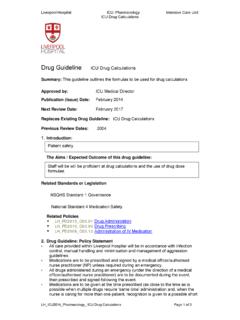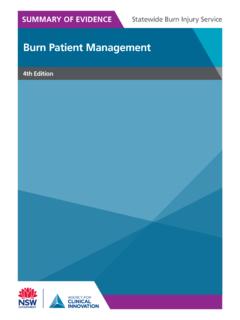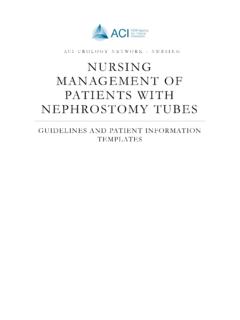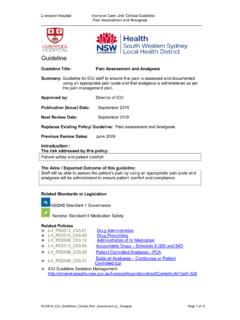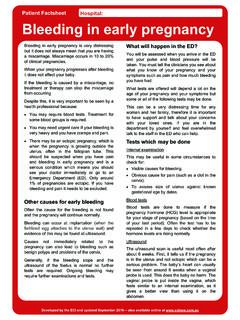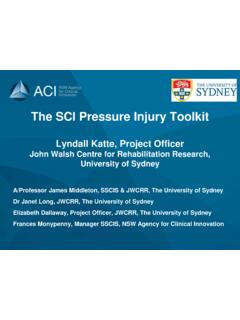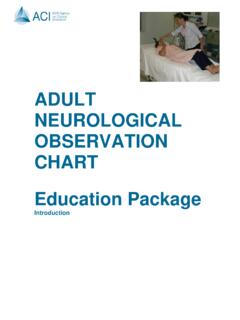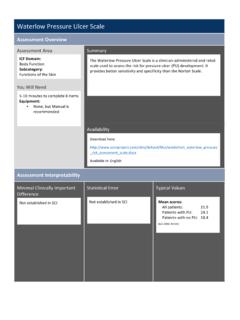Transcription of Guidelines for the prescription of a seated wheelchair or ...
1 Guidelines for the prescription of a seated wheelchair or mobility scooter for people with a traumatic brain injury or spinal cord injury Guidelines for the prescription of a seated wheelchair or mobility scooter for people with a traumatic brain injury or spinal cord injury2 Guidelines for the prescription of a seated wheelchair or mobility scooter for people with a traumatic brain injury or spinal cord injury This publication is endorsed by Occupational Therapy (OT) Australia NSW Division You may copy, distribute, display and otherwise freely deal with this work for any purpose, provided that you attribute the LTCSA and EnableNSW as the owners. However, you must obtain permission if you wish to (1) charge others for access to the work (other than at cost), (2) include the work in advertising or a product for sale, or (3) modify the : 978-1-921422-18-8 Suggested citation:EnableNSW and Lifetime Care & Support Authority, Guidelines for the prescription of a seated wheelchair or mobility scooter for people with a traumatic brain injury or spinal cord injury.
2 EnableNSW and LTCSA Editor, 2011, further copies contactEnableNSW on Lifetime Care on from EnableNSW LTCSA EnableNSW and Lifetime Care & Support AuthorityFirst edition 2011A guideline review is scheduled for 2016It is anticipated that a literature search will be undertaken and the Guidelines reviewed and updated where appropriate in 2016. Guidelinesfor the prescription of a seated wheelchair or mobility scooter for people with a traumatic brain injury or spinal cord injury3 Working party membersNamePositionOrganisationJeanine AllaousSenior Occupational TherapistBrain InjuryRoyal Rehabilitation CentreAdrian ByakPhysiotherapistSpinal Cord InjuryAssistive Technology Seating Service Northern Sydney Central Coast Health Service Private PracticeDanielle CollinsSenior Occupational TherapistSpinal Cord InjuryPrince of Wales Hospital Spinal UnitAllie Di MarcoOccupational TherapistSpinal Cord InjuryPrivate practiceLinda ElliottStatewide Equipment AdvisorEnableNSWH ealth Support Services NSW HealthBill FisherRehabilitation EngineerAssistive Technology Seating Service Northern Sydney Central Coast Health
3 ServiceKate HopmanSenior Occupational TherapistTraumatic Brain InjuryLiverpool Hospital Brain Injury Rehabilitation UnitGreg KilleenSpinal cord injury consumer representativeSuzanne LulhamDirector, Service DeliveryLifetime Care & Support AuthorityJodie NichollsSenior Occupational TherapistBrain InjuryWestmead Brain Injury Rehabilitation UnitRepresentative of Occupational Therapy Australia NSW Division Thi Hong NguyenBrain injury consumer representativeSally OatesProject OfficerEnableNSWH ealth Support Services NSW HealthLesley RadbronSenior Service Development and Review OfficerLifetime Care & Support AuthorityLyndall RossSenior Occupational TherapistBrain InjuryMid Western Brain Injury Rehabilitation ProgramCharisse TurnballSenior Occupational TherapistProject Officer and author of Spinal Seating education websiteState Spinal Cord Injury Service Seating professional development programSue LukersmithProject Officer AuthorLifetime Care & Support
4 Authority / EnableNSWG uidelines for the prescription of a seated wheelchair or mobility scooter for people with a traumatic brain injury or spinal cord injury4 Conflict of interestAt the beginning of the Guidelines development process the working party members were required to declare any real or perceived conflict of interest. One member declared the potential for a perceived conflict of interest because a family member was employed by a supplier. It was anticipated that only wheelchair features would be discussed, not suppliers or brands. Nevertheless, the working party decided and documented that if those topics arose, the party member with the potential conflict of interest would be excluded from the discussion.
5 However, those subjects were not discussed and no conflict of interest External reviewers (international, national, NSW and interstate)EnableNSW and LTCSA wish to thank the more than 25 individuals, specialist services, consumer organisations and professional associations who reviewed and in some instances trialled parts of the Guidelines during their development. They are listed in Appendix the prescription of a seated wheelchair or mobility scooter for people with a traumatic brain injury or spinal cord injury5 ContentsForeword 7 Executive summary 91. Introduction 102. Methodology and evidence for recommendations 123.
6 Framework and approach 154. Ethics 175. Goals and evaluation 18 Goals 18 Evaluation and outcome measures 206. Assessment and review 23 When and where to assess 23 Order of prescription of the seating system and wheelchair 24 Review 24 Client changes 24 Reasons for non-use 257. Capacity and performance 26 Physical capacity 26 Decision making capacity 27 Psycho-social and behavioural considerations 28 Cognition and perception 28 Sensory impairments 30 RTA requirements 30 Vision 30 Hearing 31 Upper limb capacity and risk of injury 32 Upper limb capacity 32 Upper limb injury 34 Cardiovascular fitness 39 Co-morbid conditions 39 Alcohol, prescribed medications and illicit drug use. 40 Long-term need 40 Health and safety concerns 41 Two wheelchairs 45 Guidelines for the prescription of a seated wheelchair or mobility scooter for people with a traumatic brain injury or spinal cord injury68.
7 wheelchair features 46 Pressure management 46 Ride and comfort 47 Tilt in space 48 Elevating leg rest 51 Elevating seat 52 Back rest 529. Propulsion 53 Power or manual 53 Foot propulsion 53 Power assisted 54 Drive wheel position 55 Control device 5710. Scooters 5811. Training 60 Training duration 60 Training content 61 Training in propulsion techniques 64 Mode of training 6412. Transport 65 Public transport 67 Standards 6913. Maintenance 7014. Resources 73 Goals checklist 73 Shoulder injury risk management strategy checklist 74 Long-term need checklist 75 Training topics checklist 76 Injury prevention during transportation checklist 77 Maintenance checklist 78 wheelchair comfort tool 79 Internet-based education and information 8515.
8 Appendices 86 Appendix 1 External reviewers 86 Appendix 2 Definitions and terms 88 Appendix 3 Abbreviations 92 Appendix 4 ICF framework 93 Appendix 5 Convention on the rights of people with disabilities (CRPD) 94 References 95 Guidelinesfor the prescription of a seated wheelchair or mobility scooter for people with a traumatic brain injury or spinal cord injury7 Forewordby Dr Rhonda Galbally, AOThe United Nations Convention on the Rights of Persons with Disabilities promotes and protects the rights and dignity of persons with disabilities. In 2009, Australia ratified the Convention and so affirmed our agreement and obligation to take measures which meet the rights of persons with in NSW with a traumatic brain injury or spinal cord injury who needs a wheelchair can have one.
9 wheelchairs and mobility scooters not only remove physical and environmental barriers, but can assist with the user s activity and participation in many aspects of life. The appropriate wheelchair , for the person and their environments, can enhance not only their quality of life, but also the lives of families, friends and attendant care worker and carers. In contrast, poor prescription of a wheelchair or mobility scooter can mean the person is more dependent, has fewer opportunities and often will be excluded from participation in their community. The Guidelines for the prescription of a seated wheelchair or mobility scooter for people with a traumatic brain injury or spinal cord injury provide a synthesis of the recent research evidence and guidance to help work out which is the most appropriate wheelchair .
10 The Guidelines also affirm that the person is, and should be, central to the prescription of their wheelchair , and involved in all commend the Guidelines to you. They are a very useful tool for all wheelchair and mobility scooter users in lifting the standard of consumer choice, as well as highly valuable for their direct purpose, that of assisting in the prescribing of wheelchairs and Rhonda Galbally, AOChair National People with Disability and Carers Council Guidelines for the prescription of a seated wheelchair or mobility scooter for people with a traumatic brain injury or spinal cord injury8 Forewordby Dr Adeline Hodgkinson and Dr James MiddletonA wheelchair is a vital item of assistive technology that is prescribed to enhance an individual s function and independence, increase participation in activities and community.
